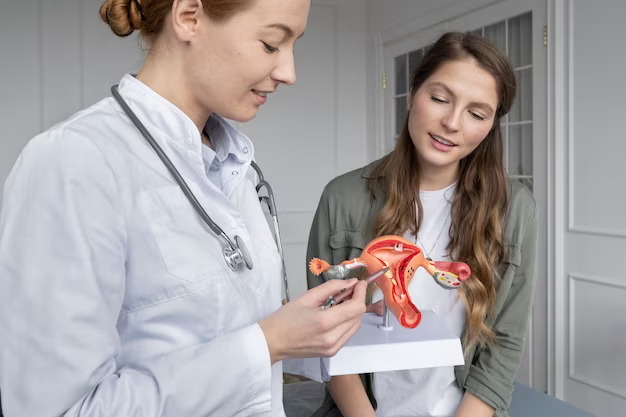In a world where every voice matters, the Women’s Aid Conference in America stands out as a profound platform for change, compassion, and empowerment. This gathering, a kaleidoscope of stories and strategies, brought together advocates, survivors, and leaders, all united by a single cause: to bolster women’s aid and advocacy. This article delves into the poignant narratives and groundbreaking insights shared at the conference, offering a glimpse into the resilient spirits and innovative minds driving this vital movement forward.
A Gathering of Visionaries and Change-Makers
The conference kicked off with an inspiring keynote speech that set the tone for the days to follow. Addressing a crowd of eager attendees, the speaker highlighted the strides taken in women’s aid, while also acknowledging the hurdles that persist. The hall buzzed with energy, as participants from various backgrounds shared both their achievements and challenges, weaving a tapestry of shared experiences and mutual goals.
Empowering Workshops and Panels
- Legal Advocacy and Rights Education
- Workshops on navigating the legal system became a cornerstone of the conference, providing attendees with valuable knowledge on protecting rights and accessing justice.
- Panel discussions featured leading lawyers and activists, discussing strategies to enhance legal support for women facing domestic violence and abuse.
- Health and Psychological Support Services
- Sessions on mental health emphasized the importance of psychological support for survivors, featuring expert psychologists and counselors.
- Interactive workshops offered tools for building resilience and managing trauma, crucial for both survivors and those aiding them.
- Economic Empowerment Initiatives
- Programs focusing on financial independence through education and employment were highlighted, showcasing successful models of economic empowerment for women.
- Discussions explored innovative approaches to integrate women into the workforce, particularly in sectors traditionally dominated by men.
Stories That Moved Mountains
The heart of the conference lay in the personal stories shared by courageous survivors. Their tales, marked by both harrowing pain and incredible perseverance, painted vivid pictures of the realities faced by many, but also underscored the remarkable strength inherent in each of them.
- A Survivor’s Testimony: One particularly moving session included a testimony from Maria, a survivor who overcame immense obstacles to advocate for others facing similar battles. Her story, filled with both tears and triumph, reminded everyone of the critical need for comprehensive support systems.
- Community Initiatives: Another highlight was a presentation by a grassroots organization that had transformed its local community by creating safe spaces for women. Their model of community-driven aid provided a blueprint for replication across the country.
Innovations and Forward-Thinking Solutions
The conference wasn’t just a place to share experiences—it was a hub of innovation. Several tech-based solutions were introduced, aimed at enhancing the safety and well-being of women nationwide:
- Mobile Apps for Crisis Intervention: New apps were unveiled, designed to offer immediate assistance and resources to women in crisis situations, ensuring help is just a tap away.
- Virtual Support Networks: Recognizing the power of digital connection, initiatives to establish robust online support communities were discussed, enabling women to seek help and advice anonymously and safely.
Driving Policy Change and Advocacy Efforts
One of the pivotal aspects of the Women’s Aid Conference was its focus on driving policy change. Advocates and policy-makers converged to discuss actionable steps that can be taken to influence legislation and create a safer environment for women across the nation.
Strategic Advocacy Workshops
- Engaging with Legislators: Workshops provided attendees with practical skills on how to effectively communicate with and persuade legislators. This included crafting compelling narratives, using data effectively, and organizing community lobbying efforts.
- Policy Drafting Sessions: Participants collaborated on drafting proposed laws and amendments that focus on enhancing protections for women. These sessions included expert guidance from seasoned policy advisors and legal experts.
Building a National Coalition
The conference emphasized the importance of a unified national movement. A major initiative launched was the formation of a coalition aimed at connecting different women’s aid organizations across the country. This network intends to share resources, strategies, and success stories, thereby amplifying the impact of their collective advocacy efforts.
- Coalition Goals: Establish consistent standards for aid, advocate for national policy changes, and provide a platform for nationwide campaigns.
- Outreach and Inclusion: Special efforts were made to include minority and underserved communities, ensuring that the coalition’s efforts reflect diverse needs and experiences.
Educational Initiatives and Public Awareness
Increasing public awareness and education about women’s issues were also central themes of the conference. Several initiatives were launched to address these needs:
- Public Awareness Campaigns: Campaigns designed to educate the public on the signs of abuse, the importance of mental health, and ways to support those in abusive situations.
- Educational Programs: Partnerships with schools and universities to integrate gender studies and women’s rights into curricula, aiming to foster a culture of respect and equality from a young age.
Media and Communication Strategies
Recognizing the power of media, the conference featured sessions on using various media platforms to advocate for women’s rights and aid. These included:
- Social Media Campaigns: Strategies were discussed on how to leverage social media to raise awareness and drive engagement on women’s aid issues.
- Partnerships with Influencers: Collaborations with influencers who can speak to diverse audiences, thus broadening the reach and impact of advocacy messages.
Future Outlook and Sustainability
As the conference wrapped up, the focus shifted toward sustainability and the future of the women’s aid movement. Keynote speakers and panelists underscored the importance of continuous effort and adaptation to changing societal conditions.
- Funding and Support: Discussions on securing sustainable funding sources were prominent, with an emphasis on developing partnerships with private and public sectors.
- Innovation and Adaptation: Encouraging ongoing innovation in service delivery and support mechanisms, ensuring that the women’s aid organizations can effectively respond to future challenges.
Call to Join the Momentum
The call to action from the Women’s Aid Conference is a reminder of the collective power of shared voices and concerted actions. Whether through advocacy, volunteering, or education, there is a role for everyone in this movement. By joining forces, we can help shape a society where every woman has the opportunity to live free from violence and discrimination.
The stories of resilience and the strategic initiatives discussed at the conference serve as both a beacon of hope and a call to action. Let us move forward with the resolve and unity displayed at the conference, committed to making a lasting impact in the lives of women across America and around the world. Together, we can continue to build a future characterized by equality, safety, and opportunity for all.



